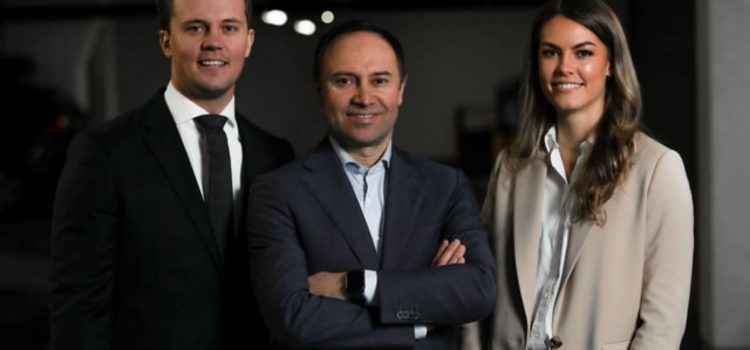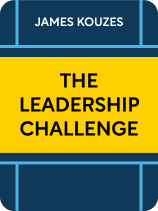

This article is an excerpt from the Shortform book guide to "The Leadership Challenge" by James M. Kouzes and Barry Z. Posner. Shortform has the world's best summaries and analyses of books you should be reading.
Like this article? Sign up for a free trial here .
What do Posner and Kouzes mean by “challenge the process” in the context of leadership? Do you always seek ways to improve your current processes?
Challenging the process, as defined by Jim Kouzes and Barry Posner in The Leadership Challenge, is all about a leader’s efforts to challenge the status quo and find ways to optimize organizational processes. There are two guidelines for challenging the process: 1) search for opportunities, and 2) experiment and take risks.
In this article, we’ll take a look at the specific ways you can “challenge the process” to proactively drive your organization or team forward.
Outstanding Leaders Challenge the Process
Outstanding leaders don’t merely manage the day-to-day tasks of keeping an organization on track; they chart new tracks for their organizations to follow. They seek out challenges rather than waiting for challenges to find them. In their book The Leadership Challenge, Jim Kouzes and Barry Posner outline two guidelines to challenge the process and find ways to make things better.
- Guideline 1: Search for opportunities.
- Guideline 2: Experiment and take risks.
Guideline 1: Search for Opportunities
Envisioning opportunities is a foundational part of leadership: Leaders think about possibilities and then lead other people toward them. Every venture starts with an idea of how life might be different.
Sometimes opportunities arrive at a leader’s feet, but most often, a leader proactively looks for them. Two rules can guide you in this:
To find new opportunities, you must take initiative. A leader guides others to a new place, and to do that, you have to disturb the existing order of things.
- Existing processes and procedures might have worked for your organization up to the present, but that doesn’t necessarily mean they’ll work in the future.
- Sometimes change might be incremental, but sometimes, you may need to change something on a fundamental level.
People in organizations grow used to doing things a certain way and are often reluctant to change their habits, defaulting to the “if it ain’t broke, don’t fix it” mentality. Even if they know a procedure could be better, they’ll often resist changing it simply because it’s easier to carry on as usual.
Consequently, as a leader, you must be the one to critically examine the processes and procedures you’ve grown to rely on, and to take the initiative to change them.
- Keep Asking Questions. People naturally ask questions during times of transition, such as when they’re joining an organization or taking on a new project. During these times, you’re looking at processes and procedures with a fresh eye, and you’ll naturally question why things are done this way and whether there are better ways to do them. Be sure to continue this process even after you’ve settled into a position or a role. Continue to ask questions that test others’ assumptions, so you can stimulate new ways of thinking and find new paths to explore.
- Act Before Others. When leaders recognize a problem, they don’t wait for permission or a set of instructions—they start devising a solution right away. By implementing a solution, you can demonstrate its effectiveness in a way that’s more convincing than a plan would have been.
- Encourage Initiative in Others. Everyone on your team, down to the most junior member, should feel they can innovate and improve your team’s systems. When you allow everyone to contribute ideas, you can end up with unexpectedly positive results—sometimes the most junior members of a team are the ones who can see processes and procedures with fresh eyes.
- Have a Reason. While you want to be constantly on the lookout for opportunities for improvement, don’t try to improve things where improvement isn’t actually needed. Don’t be someone who’s always critiquing, nitpicking, and pointing out problems. Further, if you look for problems, have alternate solutions to offer instead of just pointing out what people are doing wrong.
Guideline 2: Experiment and Learn
As a leader, when you challenge the status quo, you have to convince others to challenge it with you. However, they may be reluctant to embark on an unproven path.
You can alleviate some of these concerns by demonstrating through small experiments how your vision might work. You’ll not only be learning how to improve your strategy through trial and error, but you’ll also be providing proof of concept for your team and others in your organization.
When experimenting, follow two overall principles:
- Produce small wins.
- Learn from experience.
Produce Small Wins
While your dreams and goals may be big, you should think small when working toward them. You’ll have more success achieving a goal little by little than trying to accomplish the whole thing at once. Aim to accumulate small wins—measurable accomplishments of moderate importance—as you progress.
When you work on small pieces of your project, you can experiment and test your vision or strategy in ways that reduce the risks of failure. For example, implementing a new procedure within one department can show you what works and what doesn’t before you roll out the program to the wider organization.
Aiming for small wins has several other advantages as well:
- Small wins help the project feel achievable: If a project is large, it may feel daunting, which can discourage your team. Breaking your progress into a series of small wins will help the project seem more doable and reduce stress.
- Small wins reduce the cost of trying: A minor achievement takes less effort than a major one, but still results in a completed task that creates a sense of accomplishment.
- Small wins improve morale: Big wins feel wonderful but are infrequent. Small wins can feel equally satisfying and can happen more often, keeping up a team’s spirits.
- Small wins create momentum: When you’re on a roll of regularly achieving goals, even if those goals are small, you create momentum that can propel your team through setbacks. When regularly handling small challenges well, you develop an attitude of competence that helps you deal with larger challenges more effectively.
- Small wins accumulate: The scientific community has long recognized that major breakthroughs are the results of countless researchers who contribute little improvements that add up to a big improvement. The same is true for any field—business, politics, social work, and so on.
Learn From Experience
Experiments will lead you to success by allowing you to fail, and research shows that failure is an effective teaching tool. Failures are opportunities for learning, and consistently, leaders who approach failures with an attitude of “What can we learn from this?” outperform leaders who approach failure looking to cast blame. Leaders who leave legacies are the ones who’ve tried, failed, and then tried again, ultimately achieving success by learning from their past errors.
Experiments allow you to try out a technique more than once, and when people do something more than once, they more readily master it. An example that illustrates this was a study carried out in a ceramics class. The teacher broke the students into two groups. She told the first group that they would get a higher grade if they made more pots, regardless of the quality of those pots. She told the second group that their grade would be based on the quality of the pots they made, not the number.
The first group immediately started making lots of pots, while the second group moved more slowly and deliberately. At the end of the experiment, the teacher discovered that, counterintuitively, the students who had made the most pots had also made the best pots. The act of practicing the techniques repeatedly produced the better product—the students who were encouraged to fail over and over ended up with a better mastery of the skills.

———End of Preview———
Like what you just read? Read the rest of the world's best book summary and analysis of James M. Kouzes and Barry Z. Posner's "The Leadership Challenge" at Shortform .
Here's what you'll find in our full The Leadership Challenge summary :
- A field guide for becoming the kind of leader that other people want to follow
- The five principles of leadership and their associated guidelines
- Why before you can lead others, you must have a clear understanding of yourself






